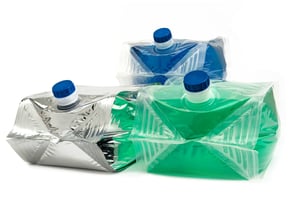Flexible packaging is no longer the curious cousin of rigid containers. Over the past few decades, flexible materials have proven their mettle in an industry filled with legacy giants such as aluminum, glass, and rigid plastics. As a result, more brands are making the switch for foods, beverages, and many other products. Are you ready to make the change?
If you wonder what is in it for you, here is the short answer:
- Lower costs
- Higher sales
- Better overall performance
- Greater sustainability and more eco-friendly options
- Happy users throughout the supply chain
Here is how flexible packaging can help your brand meet the demands of a changing world while getting a stronger foothold in your market.
#1: Store More Product in Less Space
Storage is prime real estate in nearly every business. Whether it is in your processing plant, your warehouse, or with your supply chain partners, the more you can store in a small space, the better. Flexible packaging takes up considerably less space than more traditional rigid and some semi-rigid containers without compromising product quality. The space-saving nature of flexible materials also translates to fewer trips in a transport truck and lower carbon emissions.
That said, maximizing storage is a trade-off if you cannot access the product conveniently. That is another area where flexible materials excel. With a tap, the user can dispense only what is needed without moving the container or putting the freshness of the remaining product at risk.
#2: Reduce Hard and Soft Costs While Meeting Environmental Goals
One of the most challenging accomplishments in any business is balancing environmental goals with meaningful cost reductions. Flexible packaging merges the two in a product that is better than rigid containers. It is a win/win scenario.
Pack World VP Editor, Pat Reynolds, lists some interesting facts about how other businesses are meeting their goals with flexible packaging. Here are just a few of those stats:
- Production costs drop by nearly 50 percent.
- Transportation and shipping efficiencies improve by 45 percent.
- 55 percent of brands that switched to flexible packaging saw better sales figures.
 Wines and even beers (decarbonated for packing) stay fresh, and so do a host of other products.
Wines and even beers (decarbonated for packing) stay fresh, and so do a host of other products.#3: Flexible Packaging Works for a Wide Range of Foods and Beverages
“Flexible” does not just describe the physical nature of film packaging. It is also flexible in regard to the types of products it can safely and conveniently contain. Wines in bulk, dry goods such as grains, chemicals, paint, cosmetics, and many other products can all fit conveniently in flexible packaging without worrying about migration, breakage, or contamination.
Flexible packaging is “innovative,” says David Marinac, host of Ditch the Box, at LinkedIn. In consumer-facing applications, it gives food manufacturers the freedom to design packages that suit the product. However, even when used solely for internal food manufacturing and processing, the variety of ways in which food manufacturers can put flexible packaging to use are astounding.
Nearly every set of statistics reveals the same pattern. Manufacturing and processing brands are switching to flexible packaging because it does a better job on virtually every front. It is customizable, which gives your product better protection against breakage and migration.
It is lightweight and stores more in less space, which maximizes your storage space and transportation budget. It is tough, smart, safe and ecologically sound as well. If your brand wants to step away from the ordinary and into the future with flexible packaging, contact us for a free sample and download our corporate brochure.
